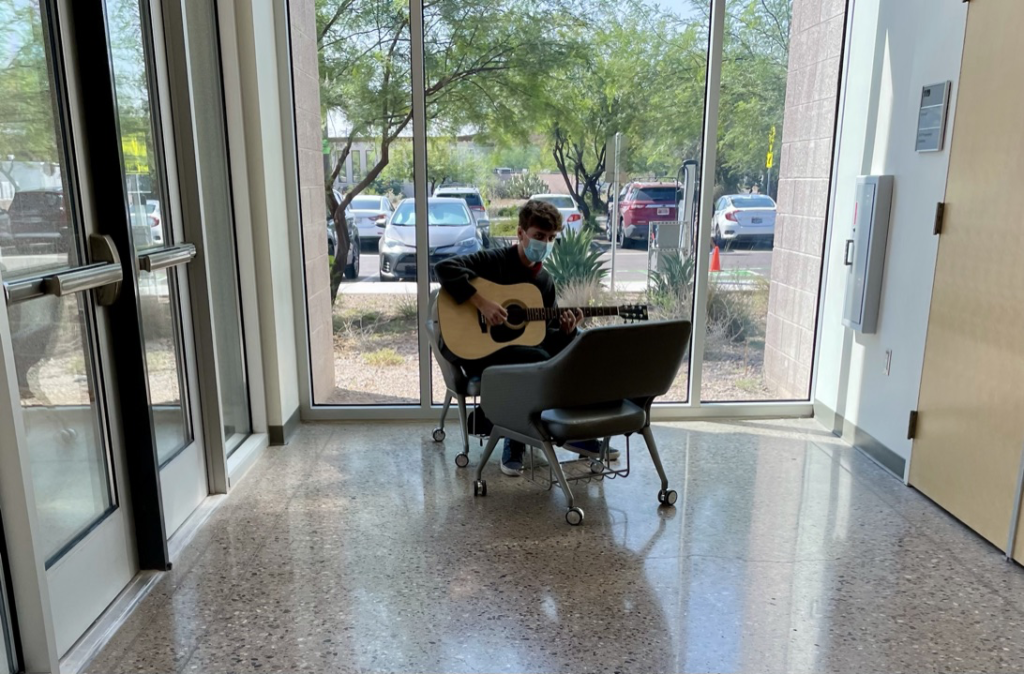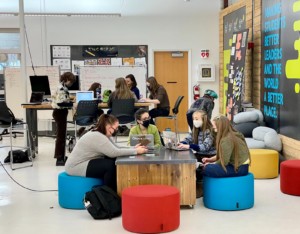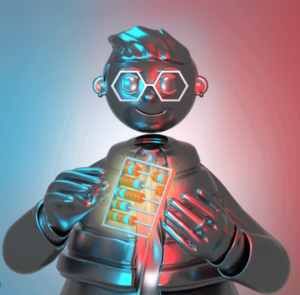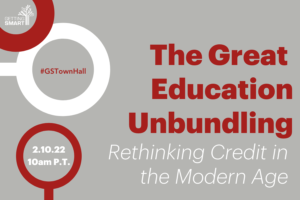The Great Education Unbundling and How Learning Will be Rebundled
Key Points
-
The pandemic accelerated the great unbundling of learning–at least for those with access, agency, and advocates.
-
While unbundling will expand, how learning is rebundled will emerge as the next innovation — accessible, personalized, accountable and massive.

More schools, more courses, more online learning experiences–for 25 years there has been steady expansion of the number of in and out of school learning options. The pandemic accelerated the great unbundling of learning–at least for those with access, agency, and advocates.
Facing increasing choice, increasing demand by parents, and increasing quality options, schools that reframe learning to credential, credit, and count programs and experiences outside of the traditional program will thrive. While unbundling will expand, how learning is rebundled will emerge as the next innovation — accessible, personalized, accountable and massive.
What’s Driving Unbundling?
In addition to the 30-year shift from print to digital and the explosion of open resources, three big trends laid the groundwork for unbundling– school choice, alternative higher education, and the emergence of big tech.
School Choice Breaks Boundaries. Over the last 30 years, private schools, homeschooling, and public charter schools have all expanded full-time K-12 learning options. Families of about one in five learners have chosen not to attend a boundary area public school during the pandemic accounting for about one million students with the growth of pods and nano-schools. These shifts expanded unbundled learning but left many questions about equity of access.
Alt Higher Ed. As costs increased and state reimbursement declined over the last 20 years, higher education tuition bills and student debt levels climbed. What didn’t increase was completion rates which still hover around 60% leading to the new worst-case scenario of debt without degree.
In response to rising costs, new forms of higher ed have emerged around the edges. Twenty years ago, Western Governors University launched an affordable self-paced and competency-based model. Almost 10 years ago, massively open online courses (MOOC) broke onto the scene with free courses from the world’s best professors. Coursera was launched by two Stanford professors (and went public in March) while edX was formed as a partnership between Harvard and MIT (and was sold to 2U in July). While course and degree completion rates remain low, these online course choice platforms expanded the world’s access to high-quality lectures, low-cost courses, and increasingly affordable degrees.
Big Tech Expands Postsecondary Learning. LinkedIn Learning is a subscription service offering 16,000 expert-led asynchronous courses. Launched with the acquisition of Lynda.com in 2015, LinkedIn Learning supports individuals and enterprise customers with tech and marketing skill-building courses that supplement or replace traditional higher ed. Microsoft, which acquired LinkedIn in 2016, moved into the live lesson space with the acquisition of TakeLessons. The platform connects learners with individual tutors in 300 subjects including music, crafts, tech, and languages.
As part of its Upskilling 2025 initiative, Amazon launched Technical Academy to take employees without any technical background and turn them into software engineers in nine months. Externally, the company offers AWS Educate, free curriculum in cloud computing pathways that connect with employment opportunities. Other technology sector leaders have built similar free or low-cost programs such as Grow With Google, IBM Training, and Salesforce.
While critics call the unbundling of higher ed and the rise of the microcredential reductivist, narrowly vocational, and anti-whole-learner, new alternatives are providing low/no-cost pathways to high wage employment.
Unbundling K-12
In the K-12 sector, critical services like transportation and food are often unbundled – supported by outside service providers. Local education agencies (LEA, school districts and charter management organizations) often out-source professional learning and some encourage teachers to guide and certify their learning with microcredentials. But for most students the learning experience is tightly bundled and controlled by state and district courses requirements, prescribed standards, required accountability tests, and adopted curricula. Budgets are another big disincentive for unbundling–LEA typically don’t want to pay other providers for something they do or could do.
However, while layers of requirements, policies and traditions exist, LEA have wide latitude in granting credit for valuable experiences and demonstrated knowledge and skills. And, while school choice has expanded slowly, we’ve also seen a gradual expansion of course choice and, more recently, experience choice.
Course Choice in K-12
While unbundling at the experience level is still a vision for the future, experiments in unbundling emerge across the ecosystem. These experiments are almost universally at the course level.
1. Online secondary schools. Most, if not all, secondary schools have online learning options, such as Missouri’s Course Access and Virtual Program. Universities such as Arizona State have entered the secondary market with courses linked to dual-enrollment options (ASU Prep Digital). Yet restrictions around where and when they are taken dominate. Exceptions emerged with the pandemic such as Cobb County, Georgia’s Classroom Choice Program allows parents and students to choose their preferred delivery modality.
2. Part-time school. Some states, such as Florida and New Hampshire allow for part-time enrollment in secondary programs. This facilitates community integration with other learning ecosystem partners such as home-school students who want to participate in courses or other activities within the local district.
3. Dual-enrollment. Many secondary schools offer dual enrollment partnerships with local community colleges. This approach reduces overall tuition costs for postsecondary enrollment through attainment of credits and up to an Associate’s Degrees prior to leaving high school.
4. Internship and Apprenticeships. Businesses that offer experiences (apprenticeships, internships) can often be translated into credit at the secondary or post-secondary level. The Partnership to Advance Youth Apprenticeship built a network of tools, resources, and partners to advance the quality of these opportunities.
5. Partial credit options. Partial credit is elusive in secondary schools, but precedent does exist. Notably, policy at the federal level and state level have protected the disrupted lives of students experiencing homelessness or in foster care (see policies in California and Washington).
6. Policy. Unbundling also has emerged via the school choice movement, with many states authorizing the “backpacking” of education funds for students. The format varies and can include direct funds to parents (such as Idaho’s Strong Families, Strong Students legislation which distributes up to $1,500 per student for educational choice). Other formats are found in vouchers, education savings accounts, and tax credits.
Experience Choice in K-12
Thousands of resources exist for teachers to build innovative learning experiences and units. A few come with badges but they’re seldom recognized for credit by local education agencies. Several are highlighted below:
- Open experiences: Khan Academy has been providing video tutorials for more than a dozen years.
- Premium experiences: Curious Cardinals, a startup by a Stanford undergraduate student, offers workshops and projects for in and out of school use. Tract, a startup by education legend Esther Wojcicki, is the first for kids, by kids online community for student-directed learning.
- Impact projects: Prepr engages learners around UN Sustainable Development Goals. AI4All engages historically marginalized groups with summer AI camps and offers an open learning experience.
- Simulations: Synthesis is a collection of hour-long simulations used at Elon Musk’s school Ad Astra.
- Modeling: Concord Consortium STEM simulators and modeling tools and UC Boulder’s PhET program are examples of high quality modeling experiences.
On Rebundling Learning
Is unbundling an explosion of opportunity or a mess that expands inequity? How will learning be rebundled into coherent, personalized pathways where valuable learning–wherever and however it takes place– is recognized and valued? The answers lie in four important and open design questions.
How to capture and communicate new capabilities? Digital credentials are becoming the new building blocks of a system of verified learning. Compared to courses, credentials typically have a smaller grain size allowing for more detailed definitions and more specific assessment of skills and capabilities. To be widely adopted, digital credentials require valid and reliable assessments and a marketplace of recipients (i.e., higher ed and employers) that rely on the verified skill assertions. A 2021 Credential Engine report cataloged nearly one million credentials suggesting strong early adoption.
Badgr and Credly are supporting the development of digital credential marketplaces of issuers (schools, colleges, training orgs) and receivers (employers and higher ed). They integrate with widely adopted learning management systems (like Canvas) and distributed ledger learner record systems (like Greenlight Credentials). Digital credentials are collected in learner records aligned with IMS or xAPI standards.
In addition to public and portable credentialing efforts, there are local pathway partnerships between training organizations and employers that rely less on point assessments and more on visibility, experience repeatability, and reputation. These local credentialing pathways provide more nuance around complex integrated or employer-specific skills but offer less portability for learners. Tech giants like IBM offer both badged pathways specific to the company (e.g., IBM Cloud Pak for Watson AIOps) and general tech skills (Intro to Cloud).
How will learning be rebundled into coherent, personalized pathways where valuable learning–wherever and however it takes place– is recognized and valued?
Nate Mcclennen and Tom Vander Ark
What learning counts?
With the explosion of digital and out of school learning opportunities, students would benefit if all their valuable experiences counted on their learning journey. This could happen in two ways:
- LEA could recognize outside learning (e.g., a Khan math credential could move a learner to the next level in a competency system) and expand credit granting for out of school experiences (e.g., credit for internships).
- Value-add providers could gain statewide recognition as an LEA and offer full and partial credits.
School districts are often reluctant to grant credit for outside learning for budgetary reasons. If states paid on progress rather than seat time, LEAs would have a stronger incentive to grant credit (even pay for credit) for learning out of school. An example is Florida Virtual School which receives reimbursement from the state for successful completions of half‐credit courses.
Who controls choices? A closely related question (to what counts) is who controls learning choices? Market enthusiasts push for more learner/parent choice and freedoms while public school advocates worry about budget losses and variations in quality with more choices.
Many school districts are incorporating more choices inside their systems–particularly during the pandemic — offering the choice of in-person or virtual learning. Some districts created their own full and part time online school, while others work with local or national partners like ASU Prep Digital which offers on-demand support.
As some learners and parents/guardians learned during the pandemic, there has been an explosion of digital learning resources, many of them freely available–at least for those with devices and broadband. Premium digital experiences and in-person visits to museums, parks, arts experiences often require memberships and transportation making access to learning choices an equity issue. One example of an effort to address this gap is the Learning Enrichment and Academic Progress (LEAP) Program ballot initiative in Colorado. It would provide $1,500 per student each year for out-of-school learning, with priority given to kids from low-income households.
How to make learning portable? For a century, degrees have been proxies for skill bundles. Because they are big, expensive, and variable, they are being augmented (or replaced) by a bundle of digital credentials mapped to job requirements. The key is a shared outcome framework. Early examples include:
- Open Skills Network launched by WGU and Walmart is an example of a credentialing marketplace with shared definitions, credentialing standards, issues and receivers.
- IMS Project Wellspring connects education outcome frameworks and employer job competencies in a system of verifiable digital credentials.
Skills credentials are being made portable with electronic learner records. Examples include:
- Mastery Transcript Consortium is a collaboration of 405 of America’s leading high schools working together on a digital high school transcript that helps learners share their unique strengths, abilities, interests, and histories.
- Greenlight Credentials is a distributed ledger that expands a high school transcript into a curated “life transcript” that includes certified and verified skills and competencies.
- Tendo is a digital skills wallet that captures training and skills from frontline workers and stores data in lifelong learning records.
Who rebundles learning into coherent pathways? High school and college advisors play an important role in helping learners stitch together rebundled learning journeys. Smart algorithms will play an increasingly important advisory role in spotting learning experiences that could be rebundled into efficient learning journeys (most LX algorithms currently sit inside black box apps and can’t recommend LX outside that app).
Precedent around rebundling already exists in high-quality learner-driven classrooms where skilled teachers guide students through projects connected to standards with real-world impact. Students become coauthors around shared outcomes in these classrooms. Yet, these examples are few and far between and still isolated within a single classroom.
San Diego Workforce Partnership uses a combination of advisors and algorithms to provide personalized and localized guidance to county residents from middle grades to working adults.
ReSchool Colorado advisors help families build a personalized learning journey that often combines formal and informal learning.
What Could Be
As secondary (and even primary) schools continue to become more porous to communities, partnerships with other learning organizations (museums, environmental education centers, community non-profits, businesses) can be viable learning opportunities for students that earn partial or full credit. By removing the barrier of full credit/school offered, schools become more robust in terms of richness of offerings as well as more personalized to meet the needs of students and communities.
The majority of unbundled experiences still fall back on the course level as the smallest granular level of choice. Following the lead of industry, unbundling in schools should mean a reduction in grain size so that skills are the level of unbundling rather than courses.
By moving from school choice to course choice to experience choice, learners can co-design personalized and contextualized pathways with the support of high-relationship teachers and mentors.
Early pilots in this area include Liberty Academy in Kansas City which allows students to create their own projects and link individual competencies to the projects. This learner-centered approach unbundles the typical course work at a high school to focus on proficiency at the level of competency connected to a learner experience.
Enabling Progress
Seven policy changes would enable a coherent rebundled future of learning:
- State policy should eliminate seat time requirements in lieu of mastery demonstration. This change is in the works in many states but is paradigm shifting for most districts and networks. Examples from Washington and Illinois are among the 49 states that explicitly allow competency-based credit in districts.
- States should reimburse LEA for progress rather than seat time (or a combination of attendance and performance). This would encourage LEA to contract and partner with multiple providers.
- States should provide weighted funding to provide extra time and support for learners that bring more risk factors to school. This could expand access to additional out of school learning resources for those that need it most.
- States could authorize new LEA to provide part time (summer, after school and supplemental) priority learning experiences with performance reimbursement (#2) and credit reciprocity.
- LEA should unbundle courses into competencies and provide several options for partial or full mastery demonstrations including work based learning experiences. LEA could convert some teachers to community learning coaches to act as the liaison between business, community organizations and postsecondary learning institutions.
- Learners and LEA should have access to personalized and localized guidance systems that expose possible futures and surface relevant learning experiences.
- Open technology resources should track competencies including full and partial credits in a sharable learner record.
The explosion of unbundled learning has initially benefited learners with access, agency, and advocates. The rebundling of learning at a more granular level will put more learners on intentional personalized pathways and fulfill the promise of anywhere, anytime learning for all.

Nate McClennen








Sally Chew
What an awesome resource shared for all passionate about innovation in education to prepare students to be be future ready